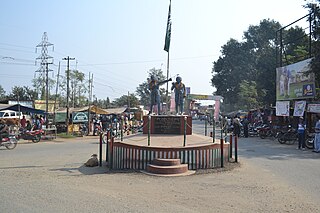 W
WKolwezi or Kolwesi is the capital city of Lualaba Province in the south of the Democratic Republic of the Congo, west of Likasi. It is home to an airport and a railway to Lubumbashi. Just outside of Kolwezi there is the static inverter plant of the HVDC Inga-Shaba. The population is approximately 573,000.
 W
WThe Krunkelbach Pit, also known as the Hans Paul Pit, was a mine established to investigate a uranium deposit in the High Black Forest near the municipality of Menzenschwand, today part of St. Blasien in the county of Waldshut in the south German state of Baden-Württemberg. Located on the edge of the nature reserve of Feldberg, operation of the mine was abandoned between 1961 and 1991 due to protests from local residents, conservationists and environmentalists as well as the anti-nuclear movement. In the 1970s, plans to use water from the pit that contained radon in order to build an exclusive health spa around Menzenschwand, were cancelled. Since 2005, water from the uranium ore deposit has been used to run a radon bath in Menzenschwand.
 W
WKvanefjeld, in Greenland, is the site of a mineral deposit, which is claimed to be the world's second-largest deposit of rare-earth oxides, and the sixth-largest deposit of uranium. There are also substantial sodium fluoride deposits, and Kvanefjeld is thought to be one of the largest multi-element deposits of its kind in the world.
 W
WMalargüe is a city in the southwest part of province of Mendoza, Argentina, about 370 km south of the provincial capital Mendoza. It is the head town of the Malargüe Department, and it has about 27,000 inhabitants as per the 2010 census [INDEC].
 W
WMounana is a town in Gabon. It lies on the N3 road and from 1958 until the 1990s was a major uranium mining centre. The mine is now closed, and it is now primarily a centre for agriculture. According to the 1993 census it had a population of 6,372 and in 2013 it had an estimated population of 12,437.
 W
WJadugora is a census town in Purbi Singhbhum district in the Indian state of Jharkhand. It is a small township of Uranium Corporation of India in the Singhbhum district of Jharkhand state in Eastern India. It is 35 km by road and 20 km by train from the city of Jamshedpur. This was the first mines where Uranium was produced in India on a reasonable scale. The township was established in 1965, and it was way ahead of its time with modern school, clubs with tennis courts and a full-fledged hospital. The school here was part of the chain of schools called Atomic Energy Central School.
 W
WOklo is a region near the town of Franceville, in the Haut-Ogooué province of the Central African country of Gabon. Several natural nuclear fission reactors were discovered in the uranium mines in the region in 1972.
 W
WShinkolobwe, or Kasolo, or Chinkolobew, or Shainkolobwe, is a radium and uranium mine in the Haut-Katanga Province of the Democratic Republic of the Congo (DRC), located 20 km west of Likasi, 20 km south of Kambove, and about 145 km northwest of Lubumbashi.
 W
WUranium acid mine drainage refers to acidic water released from a uranium mining site using processes like underground mining and in-situ leaching. Underground, the ores are not as reactive due to isolation from atmospheric oxygen and water. When uranium ores are mined, the ores are crushed into a powdery substance, thus increasing surface area to easily extract uranium. The ores, along with nearby rocks, may also contain sulfide. Once exposed to the atmosphere, the powdered tailings react with atmospheric oxygen and water. After uranium extraction, sulfide minerals in uranium tailings facilitates the release of uranium radionuclides into the environment, which can undergo further radioactive decay while lowering the pH of a solution.